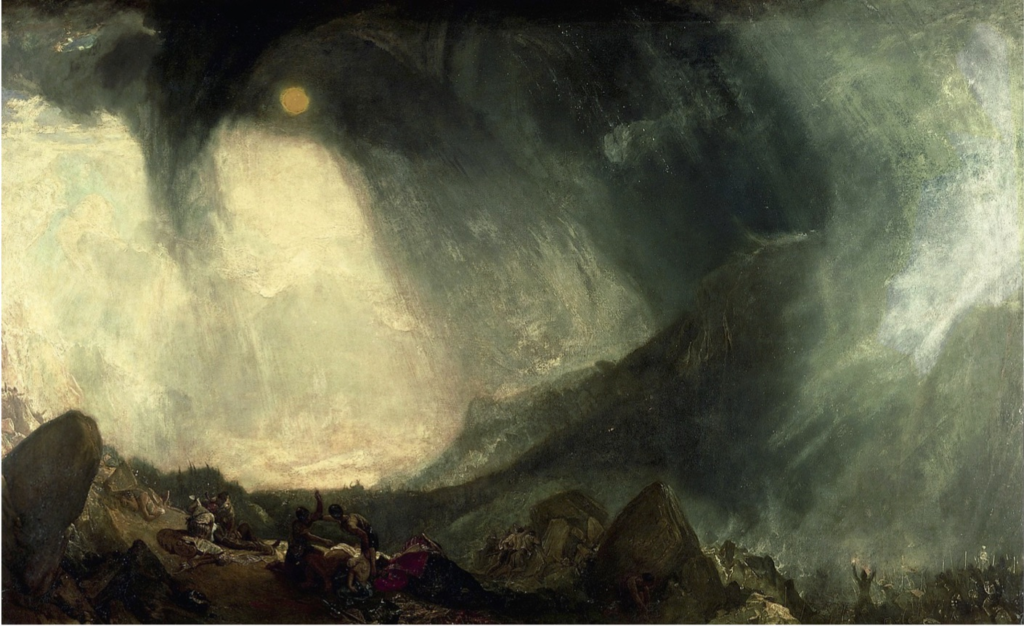What is Romanticism?
Romanticism was an art and literary movement from the late 1700s to the 1800s. It pushed back against logic and reason, focusing instead on emotions, nature, and personal expression. It aimed to capture deep feelings and the wild beauty of the world.

Facts About Romanticism
- Who: Artists like J.M.W. Turner and John Constable, poets like William Wordsworth, and composers like Beethoven.
- What: A movement that highlighted emotion, imagination, and nature.
- Where: Started in Europe, mainly in Germany, Britain, and France, then spread.
- When: Late 18th to mid-19th century.
- How: Expressed through paintings, poetry, and music that captured the power of nature and human emotions.
- Why: It was a reaction to the Industrial Revolution and the cold, logical focus of the Enlightenment.
The Sublime
The Sublime is all about the overwhelming power of nature, huge mountains, wild storms, or endless oceans that make people feel tiny. Romantic artists loved showing this contrast between human life and nature’s vastness.

J.M.W. Turner (1775–1851)
- Turner painted with bold colors and light to show nature’s energy.
- Famous for works like The Fighting Temeraire and Rain, Steam, and Speed.
- His art often captured The Sublime, showing wild seas and dramatic skies.
John Constable (1776–1837)
- Constable painted calm, detailed scenes of the countryside.
- Known for The Hay Wain and Dedham Vale, celebrating everyday rural life.
- His work was more peaceful compared to Turner’s dramatic style.
Key Words and Terms
- The Sublime: The feeling of awe when facing nature’s power.
- Emotion: A big part of Romantic art, often shown in dramatic scenes.
- Nature: A main theme, focusing on its beauty and unpredictability.
- Imagination: Valued over strict logic and reason.
- Individualism: Celebrating personal expression and feelings.
- Picturesque: The charm of irregular, natural scenery.
- Dramatic Light: Used by Turner to create intense moods.
- Atmospheric Perspective: A technique to add depth and feeling.
Today, landscape photography often follows Romantic ideals, capturing nature’s drama and beauty, much like Turner and Constable did in their paintings.
Notes:
was not a very popular genre in this period of time, very large painting of a store river where john constable grew up at noon – before it was called The Hay Wain. Constables father was landowner, a lot of economic stress and relation to the industrial revolution. The industrial revolution presumed to have had taken workers away. Because landscape were not very popular at the time, this time of very large painting gave a shock factor in which wasn’t very expected. No sense of nature to be thought in this sense of moment, an expression of his own personal experiences. The use of nature now has meaning for the advancement into large cities which many do not have much experience with nature, this made his artwork stand out. The texture of the photos made it so you could feel the rivers and foliage, in which his artwork relates to his experiences in growing up with a lot of nature and his actual art skills to replicate this.
